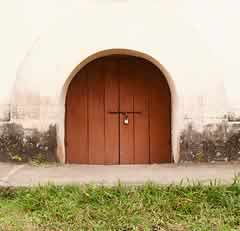Permaculture is a term coined by Bill Mollison and David Holmgren in Australia. The term is a mix of “permanent”, “culture” and “agriculture”.

Permaculture is a “whole systems” design methodology based on science and careful observation of the “pattern language” in Nature. This wholistic systems-design methodology integrates water, energy usage and efficiency, composting in smart ways, increasing soil fertility, improving water holding capacity of soils, alternative building and construction methods, integrating animals, plants and trees, social and “invisible structures” such as local zoning regulations and integration with the greater community… and so much more.
A “Permaculture design” is based on a set of ethics and design principles simply summarized as: Good for Earth – Good for People – Fair Share (or Share the Surplus).
Whole Systems – Regenerative Design
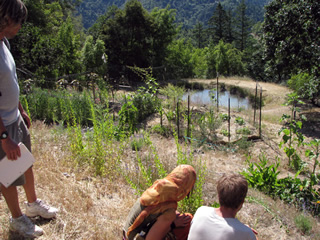
The Permaculture movement seeks to restore fertility and sanity to complex living systems by observing and mimicking the ways Nature works. With minimal human intervention, we direct natural processes in ways that provide bounty and beauty for humans, while encouraging, protecting and supporting Nature and the local environment.
Given the daunting challenges we face in our world today, Permaculture provides a positive, proactive, community-oriented way to live more lightly and sustainably on the Earth. It encourages a more simple, meaningful and rewarding aesthetic and lifestyle for oneself, family, friends and community.
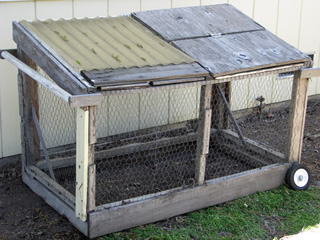 Re-Cycle
Re-Cycle
In nature everything is recycled. When one thing dies it eventually becomes food for something else. Nothing is “thrown away”. Everything participates in an intricate web of life – be it the complicated interaction of microbial life in healthy soil; turning table scraps, old hay and manure into fantastic, rich compost for your organic garden; grazing animals adding fertility to hillsides and pastures with their wastes, moving your chickens in a “chicken tractor” to eat bugs and add their fertilizer, ripping keyline patterns or digging swales and ponds to slow, sink and spread surface water or using on-site sand, straw and clay to make beautiful cob Pizza ovens and multi-function sitting areas and structures.
Patterns and Flows
Permaculturalists take the time to observe the patterns and flows unique to a site before “doing” anything. What changes or stays the same during a day, a season, over multiple years? What are the patterns of sun, shade, wind and water flow through the landscape? Where are the normal migration and traffic patterns and paths of animals and humans? What areas are “high use”. What areas are more remote and what are the benefits/challenges of this distinction (herb and breakfast gardens near kitchens vs. more remote root vegetables and woodlot)? What would be the property’s response to a 100-yr flood or other natural disaster?
What beneficial and problematic plants, insects and animals inhabit the site? What trees and native plants can provide craft materials, fuel and food? How can one indentify and utilize on-site resources to create an abundant, healthy system that’s good for Nature, good for the humans and provides a surplus that can be shared and recycled back into the system?
The Art of Lazy Farming
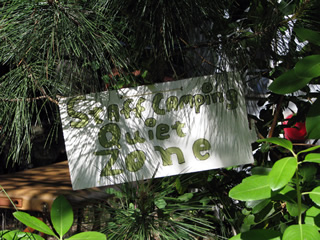 A Permaculture designer once said you should be able to lie on your back in your favorite “sit spot” and simply reach over and pick something delicious and nutritious to eat. A well built Permaculture design project – once it’s up and running – is a balanced, natural and regeneratve blend of systems and “edges” that will eventually demand less and less of your time, effort and off-site resources.
A Permaculture designer once said you should be able to lie on your back in your favorite “sit spot” and simply reach over and pick something delicious and nutritious to eat. A well built Permaculture design project – once it’s up and running – is a balanced, natural and regeneratve blend of systems and “edges” that will eventually demand less and less of your time, effort and off-site resources.
Look to Nature and how she makes permanent, self-sustaining, regenerative systems. No one fertilizes a forest; yet look at the amazing abundance and diversity of life that thrives in a woodland riparian zone.
Imitate Nature
Permiculture design seeks to mimic these natural patterns. Every Permaculture design is “site specific”. We reuse/repurpose “waste” into resource materials. We determine cooperative “guilds” of natural/native plants that work together to produce maximum yield for the growing space.
In general our goal is to establish and maintain a balanced, natural and sustainable – no, regenerative – system. The ideal is that once a Permaculture design is up and running, it should thereafter require minimal time and effort from the site owner, continually renew and replenish soils and produce an abundance of food, beauty and right livelihood.
Nuts, Bolts and Succession
The fundamental design methodology in Permaculture is: Observe, Mimic, Imagine, Build and Celebrate.
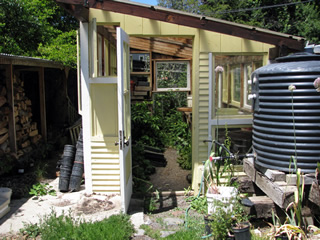 Permaculture provides a whole system design that transforms your property into an abundant system, less pests and a beautiful and inspiring environment in which to thrive. Typical systems considered include: water, sewer, how power is generated, biogas, solar ovens, natural building, air flows for natural cooling/warming, composting and greywater systems, organic gardening, aquaculture, aquaponics, how the site interacts with neighbors and prevailing cultures of the region, other social structures from local zoning concerns to sharing your abundance and building/educational projects with friends, neighbors and local markets.
Permaculture provides a whole system design that transforms your property into an abundant system, less pests and a beautiful and inspiring environment in which to thrive. Typical systems considered include: water, sewer, how power is generated, biogas, solar ovens, natural building, air flows for natural cooling/warming, composting and greywater systems, organic gardening, aquaculture, aquaponics, how the site interacts with neighbors and prevailing cultures of the region, other social structures from local zoning concerns to sharing your abundance and building/educational projects with friends, neighbors and local markets.
Start small and build on successes
Nothing needs to be built until one can find at least 7-10 “stacked functions” in the system. The wall of an outdoor sitting room may also be: a solar heat sink, a cooling wind diverter, source of shade, surface on which to make art, the holder of shelves, sink or a work bench, a tea bench and gathering spot, a mini bread/pizza oven next to a fireplace,…
We can employ “natural pest control” rather than expensive and potentially toxic pesticides and fungicides. We can inter-plant multi-culture species that confuse harmful bugs and insects Improving soil quality can promote efficient nutrient cycling and healthy soil in which pests don’t thrive. Planting insectiary plants can attract beneficial birds and insects that prey on the “bad guy” pests.
We can build effective compost piles, integrated into effective flows on your property. Making compost can evolve into compost teas to further improve soil fertility and plant vitality. Two-dimentional gardens can evolve into diverse, multi-story food forests.
It’s All About the Trees
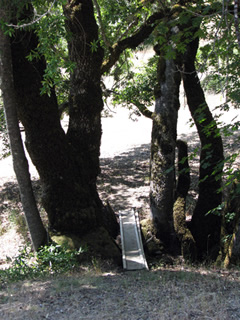 Expand your thinking. Quite often the planning of many garden plots is 2-dimensional – the carrots go over there, tomatoes there and the corn over there… An “edible food forest garden” looks to the 7-stories/layers in a natural forest system and designs guilds of plants that complement each other and thrive in the various levels.
Expand your thinking. Quite often the planning of many garden plots is 2-dimensional – the carrots go over there, tomatoes there and the corn over there… An “edible food forest garden” looks to the 7-stories/layers in a natural forest system and designs guilds of plants that complement each other and thrive in the various levels.
From canopy to below the earth, there are beneficial plant/animal interactions at each layer of a food forest system. There can be fruit and nuts from intermediate trees partly shaded by high canopy trees. Vines can integrate multiple stories and serve as transport in many ways. Low-level berry bushes and grasses can feed humans and animals and even serve as fodder for livestock grazing nearby, adding diversity to their diet.
Mycorrhiza fungi growing beneath the soil can extent the reach of plant root systems hundreds of times and transport nutrients and water over large distances and perhaps pop up a delicious truffle on occasion.
Food Forest Orchards and Hedgerows
A food forest hedgerow can provide shade, windbreaks and boundaries to separate grazing areas in a managed pasture system. And of course selective thinning provides firewood and craft materials.
Orchards of nut and fruit trees can take years from planting to harvest, but these trees can be inter-planted with other fruitful crops in the early years. As they grow into maturity, they shade out those crops but offer their own fruit. Cover crops and thinnings from trees can be added to compost, provide feed and fodder for animals or “chop and dropped” in place to provide mulch to further build soil nutrition and retain carbon and moisture. At the end of their cycle, trees become treasured timber for furniture and building – even diseased or damaged trees can provide firewood/fuel. And remember the fantastic homes trees provide to birds and other wildlife.
Carbon Capture, Water and the Nutrient Cycle
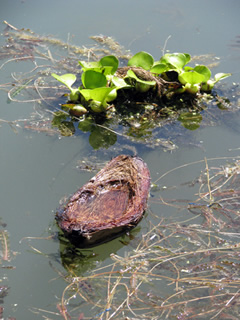 Nature experiements and evolves through succession. After a fire, flood or other extreme event transforms a landscape, “pioneer species” move in and establish themselves in disturbed soils, locking up valuable, basic nutrients that get released to other plants further down the line of succession. Thus soil nutrition is built as simple “weeds” prepare the way for grasses and eventually more diverse, mature, complex forests and ecosystems.
Nature experiements and evolves through succession. After a fire, flood or other extreme event transforms a landscape, “pioneer species” move in and establish themselves in disturbed soils, locking up valuable, basic nutrients that get released to other plants further down the line of succession. Thus soil nutrition is built as simple “weeds” prepare the way for grasses and eventually more diverse, mature, complex forests and ecosystems.
The Problem with Farming
Modern factory farming is about what’s good for mechanical farming machinery rather than what’s good for the soil and plants. Before the last World Wars, of necessity people farmed in a much more low-tech, sustainable way. There’s only so much tilling and plowing one can do with horses and oxen. Chemical fertilizers and pesticides had not yet been developed, so local and indigenous knowledge and wisdom about the soil and farming was relied on, and crafts and skills passed on. People had to use what they had in creative ways.
Large-scale mono-crop farming has become oil and chemical intensive. Heavy equipment compacts soil that becomes more and more depleted each growing season. A “hard pan” layer develops several inches to feet below the soil where the plow rides and compresses the subsoil while tearing up the fragile, interrelated webs of microbial life in the soil. The resulting flush of nutrients after a first plow produces great crops that first year, but then chemical fertilizers are required for succeeding years to replenish soil nutrients and maintain yeilds. The hard pan layer stops roots from reaching deeper into the soil, promotes water runoff at this compaction layer and fosters anaerobic activity that can further destroy roots and other beneficial aerobic microbial life. Plows keep going deeper. It takes more fuel and hosepower to drag them. Chemical fertilizers keep piling on. The soil becomes deader and more depleted.
Carbon Sequestration
We can sequester and rebuild carbon reserves in soil with compost, burying old logs, biochar,… The old logging practice of clear-cutting a stand, then putting fire to piles of left over limbs and litter is crazy. Instead, these should be buried to lock that carbon up in the earth rather than throw it into the air as pollution.
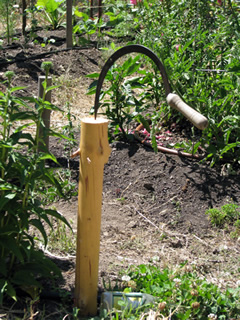 Permaculture explores many methods for sequestering carbon in the ground, while also improving soil quality. Hugle-culture from Germany is a technique for composting scrap wood and yard waste and planting a garden on top. Bio-char involves slow cooking of wood to drive off gasses, leaving carbon honeycombs in which beneficial fungi and bacteria can thrive or “green charcoal” for clean heating fuel. Adding shredded (different than chipped) wood to compost piles and harvesting bio-gas as the pile “cooks”. We can clean up our air and improve our soil’s fertility and water/air holding capacity naturally – what a welcome alternative to “cap & trade-carbon credits” mentality.
Permaculture explores many methods for sequestering carbon in the ground, while also improving soil quality. Hugle-culture from Germany is a technique for composting scrap wood and yard waste and planting a garden on top. Bio-char involves slow cooking of wood to drive off gasses, leaving carbon honeycombs in which beneficial fungi and bacteria can thrive or “green charcoal” for clean heating fuel. Adding shredded (different than chipped) wood to compost piles and harvesting bio-gas as the pile “cooks”. We can clean up our air and improve our soil’s fertility and water/air holding capacity naturally – what a welcome alternative to “cap & trade-carbon credits” mentality.
As the soil gains carbon, it also develops rich diversities of micro-life, fungi and bacteria which break down bigger “stuff” into nutrients. The micro-life also builds micro-tubules through out the soil, adding structure and passageways for root growth and movement of water and air. The resulting “soil food web” gets richer year after year instead of becoming depleted and requiring supplementation with chemicals.
Compost, mulch and compost teas are excellent and standard Permaculture ways to get Life back into soils. This produces strong, healthy vegetation and better retention and movement of water in the soil.
Ready to Take the Next Step?
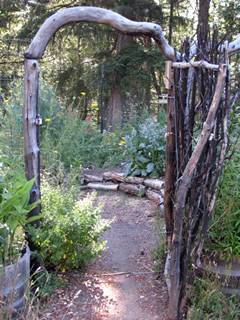 Whether you own a hundred acre estate, a quarter-acre homestead, or rent a small, urban apartment – Permaculture principles and techniques can educate and help you expand your vision of what’s possible. You can move beyond simple recycling into a more efficient, sustainable and affordable lifestyle that will reward you in many ways.
Whether you own a hundred acre estate, a quarter-acre homestead, or rent a small, urban apartment – Permaculture principles and techniques can educate and help you expand your vision of what’s possible. You can move beyond simple recycling into a more efficient, sustainable and affordable lifestyle that will reward you in many ways.
We are entering a future that is filled with many exciting possibilities for a simpler, more meaningful lifestyle – but we also face unprecedented challenges. This author believes our ability to slow down, observe, quiet/clear one’s mind and “smell the roses” is critical to developing the vision and ingenuity we may need in order to thrive through these times.
Your Permaculture Walkthrough
Interested in Sustainability? Wanna learn about the opportunities and challenges available at your place? Do you have a few acres or a simple apartment? There are opportunities to learn and apply basic Permaculture principles where you live to make your life more sustainable. From simple composting to organic garden layouts to landscape design, we will review what resources you have and find simple ways to add more regenerative aspects to your lifestyle.
Contact us to schedule a “permaculture walk through” of your property. We can educate you and help you access your current situation, challenges and resources. Together we will make a transition plan and find the best mix of “quick fix”, “retro-fit” and “ultimate Permaculture” design for your needs and budget.
